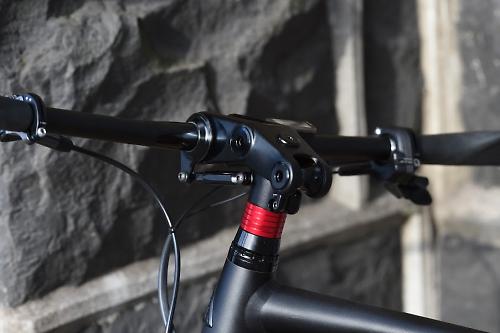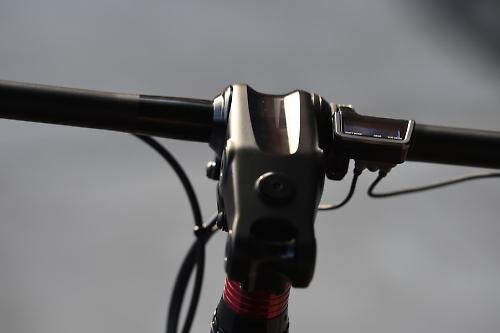- News
- Reviews
- Bikes
- Accessories
- Accessories - misc
- Computer mounts
- Bags
- Bar ends
- Bike bags & cases
- Bottle cages
- Bottles
- Cameras
- Car racks
- Child seats
- Computers
- Glasses
- GPS units
- Helmets
- Lights - front
- Lights - rear
- Lights - sets
- Locks
- Mirrors
- Mudguards
- Racks
- Pumps & CO2 inflators
- Puncture kits
- Reflectives
- Smart watches
- Stands and racks
- Trailers
- Clothing
- Components
- Bar tape & grips
- Bottom brackets
- Brake & gear cables
- Brake & STI levers
- Brake pads & spares
- Brakes
- Cassettes & freewheels
- Chains
- Chainsets & chainrings
- Derailleurs - front
- Derailleurs - rear
- Forks
- Gear levers & shifters
- Groupsets
- Handlebars & extensions
- Headsets
- Hubs
- Inner tubes
- Pedals
- Quick releases & skewers
- Saddles
- Seatposts
- Stems
- Wheels
- Tyres
- Health, fitness and nutrition
- Tools and workshop
- Miscellaneous
- Cross country mountain bikes
- Tubeless valves
- Buyers Guides
- Features
- Forum
- Recommends
- Podcast
TECH NEWS
Naild launches R3ACT suspension stem with 60mm of travel
You wait ages, and then loads of suspension stems come along at once. The latest comes from Vancouver-based company Naild, which has just unveiled its new R3ACT suspension stem. Using a parallelogram design the stem provides 60mm of suspension.

Suspension stems were once popular (okay we’re being a bit generous) on mountain bikes back in the 1990s. Long since confined to the history books, they appear to be making something of a comeback, albeit in the road cycling market. There’s certainly more interest in comfort these days, with wider tyres and sportive bikes being all the rage as cyclists seek out extra ride comfort, especially with the generally poor state of the roads.

road.cc has reported on two similar suspension posts in the past, the StaFast and the ShockStop. It’s perhaps city and urban bikes that such a product is well suited to, and it appears that this is the market the company is aiming its new R3ACT stem at. But it also reckons the growing gravel market and the latest bikes coming out in the allroad market are a natural home for such a product. With Cannondale’s Slate featuring a 30mm Left suspension fork, it’s clear that bike designers are considering front suspension for such riding.
- 9 ways to make your bike more comfortable
The patented design provides 60mm of travel and features a parallelogram design, with a pivot in the top of the stem body and a lower linkage connecting the front of the stem to the steerer tube section of the stem. Naild says the system is designed to feel like a rigid fork on smooth roads, and only activate when the front wheel encounters a sizeable impact like a pothole, bump or crack in the road.

"I've been thinking about a different approach to suspension for a long time", says Naild’s Darrel Voss. "Bicycles are very efficient with human input generally residing above 93% output to the ground. But human output is relatively small at around 5 watts per Kg. So anytime the wheels lose contact with the ground or are put under compression loads there will be losses - loss of control, braking, speed, etc., which requires energy to overcome.
“The individual losses may be small on individual events but they are significant, especially over time. The breakthrough of the R3ACT System is that it allows the wheel to trace the ground for a more balanced contact that minimizes loss in forward momentum. And that's the key, preserving as much of the rider's energy as possible. Bumps, potholes, chip sealed roads, expansion cracks, railroad crossings; all these small events rob precious energy hurting efficiency and eventually slowing you down and tiring you out. Saving energy benefits all riders from top level racers to casual cyclists."
Naild, in case you’re wondering, is also the company behind the novel thru-axle and disc brake mount that we saw on the new Marin Gestalt a little while ago.
More at www.naild.it
David worked on the road.cc tech team from 2012-2020. Previously he was editor of Bikemagic.com and before that staff writer at RCUK. He's a seasoned cyclist of all disciplines, from road to mountain biking, touring to cyclo-cross, he only wishes he had time to ride them all. He's mildly competitive, though he'll never admit it, and is a frequent road racer but is too lazy to do really well. He currently resides in the Cotswolds, and you can now find him over on his own YouTube channel David Arthur - Just Ride Bikes.






This can work - might need longer bolts. https://www.sjscycles.co.uk/lighting-spares/madison-universal-light-moun...
This was a failure to give way at a roundabout so although it was relatively straightforward to anticipate and avoid there is traffic law to...
Ah - I have now read Wikipedia on loons, and perhaps I can understand their objections:...
she questioned what Police Scotland is doing to "deter dangerous driving and protect cyclists"...
I've got a few reports coming up to one year where I've been told that they will take action but I don't know what action yet. I'll let you know...
I feel Flintshire Lad's response - "A LABOUR councillor (candidate)!"...
Last clip especially for wtjs !!...
Haha, that my pet peeve....
I'm not sure the UCI worlds are on the protected sports list, as surely CX & MTB would be shown too, the Beeb probably just acquire it as part...
Re-deployed on Twitter duty?